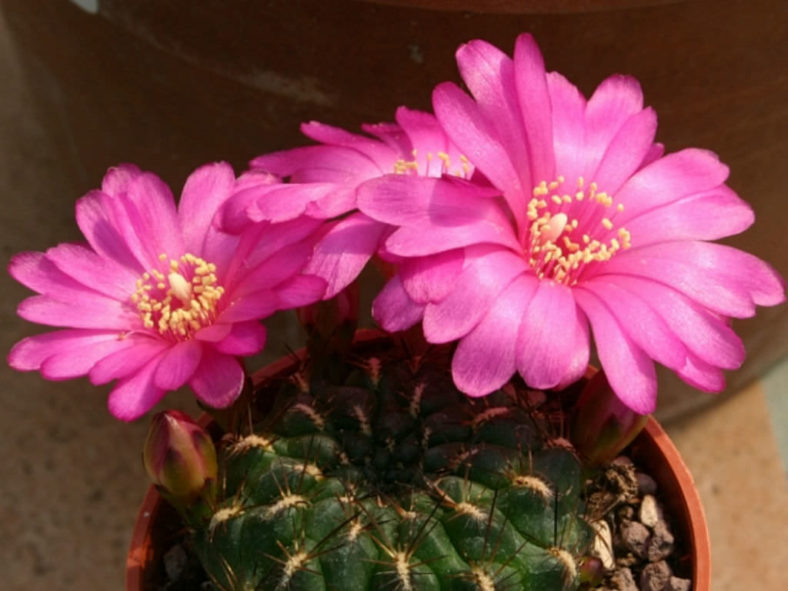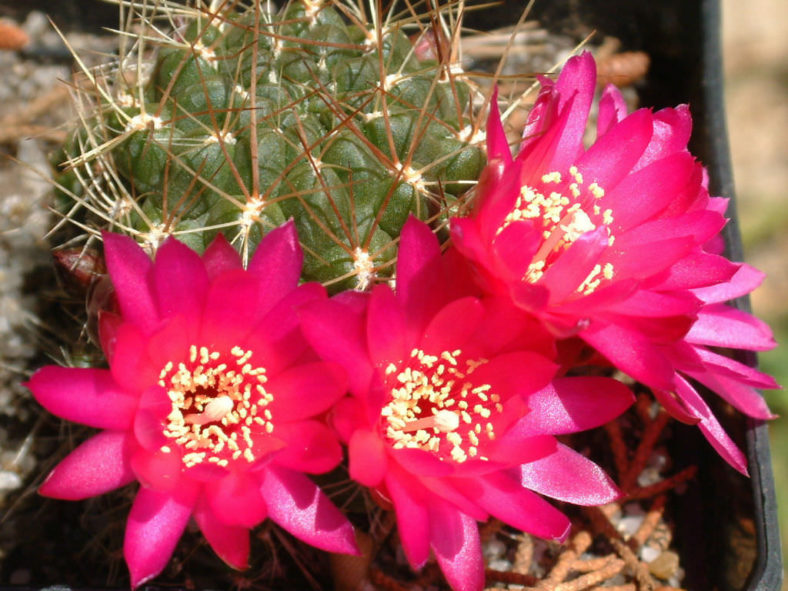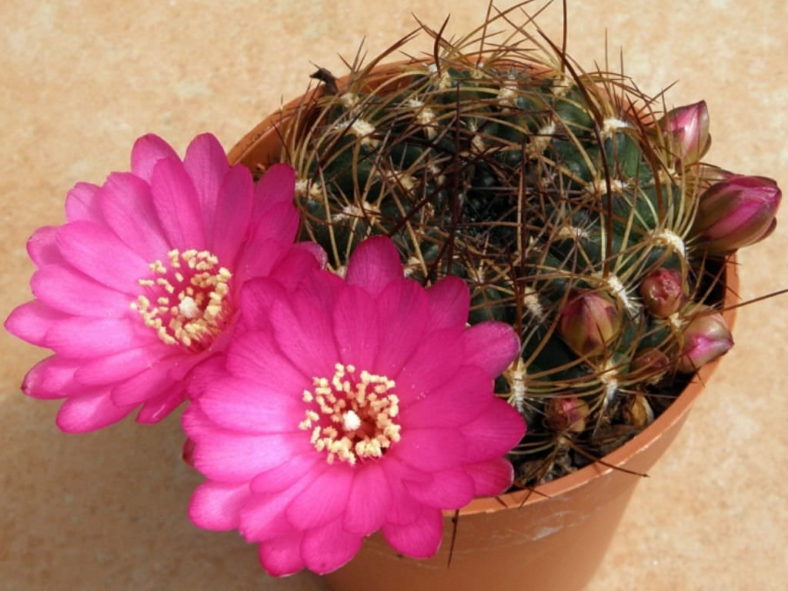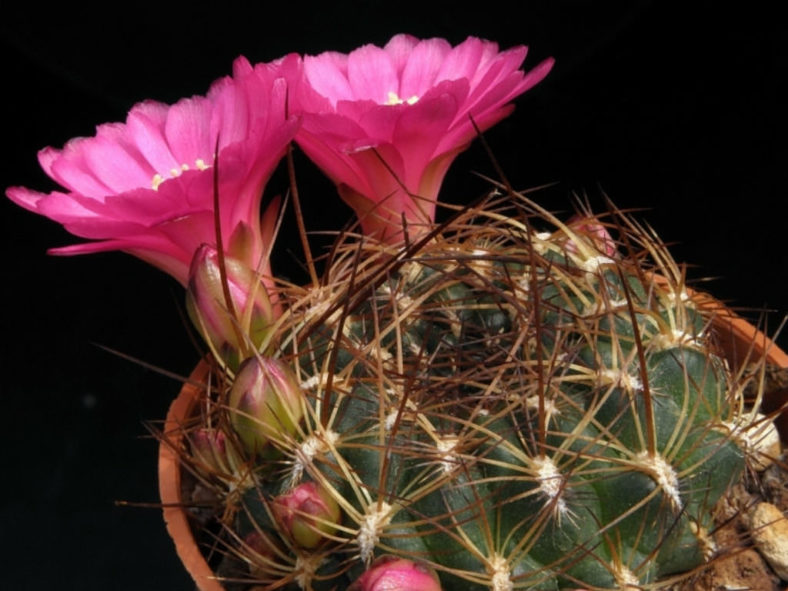Scientific Name
Rebutia steinbachii Werderm.
Synonym(s)
Rebutia steinbachii subsp. steinbachii, Sulcorebutia steinbachii, Weingartia steinbachii
Scientific Classification
Family: Cactaceae
Subfamily: Cactoideae
Tribe: Trichocereeae
Genus: Rebutia
Origin
Rebutia steinbachii is native to southern Bolivia. It occurs north and east of Cochabamba, mainly in flat, dry, stony areas.
Description
Rebutia steinbachii, formerly known as Sulcorebutia steinbachii, is a small cactus that forms clumps of many flattened globose stems with usually 13 spiraling ribs separated into rhomboidal tubercles tipped with narrow, white-felt areoles and clusters of near-black spines. The stems are grayish-green to dark green, sometimes tinged red. They are up to 1.6 inches (4 cm) tall and 2 inches (5 cm) in diameter. Areoles are up to 0.2 inches (0.5 cm) long and bear 9 to 12 radial and 1 to 3, sometimes absent, central spines. The radial spines are up to 0.8 inches (2 cm) long, pressed against the stem. Central spines are slightly stouter and up to 1.2 inches (3 cm) long.
The flowers vary in color from yellow, orange, and red to magenta or violet, often with white inner petals. They are funnel-shaped, up to 1.4 inches (3.5 cm) long, and up to 1.8 inches (4.5 cm) in diameter, and appear in late spring.

Hardiness
USDA hardiness zones 9b to 11b: from 25 °F (−3.9 °C) to 50 °F (+10 °C).
How to Grow and Care
If you can grow cacti and succulents successfully, you can likely grow the popular Rebutias without too much trouble. Their water and light requirements are pretty typical for many cacti species, including a cooling period in the winter to promote better blooming. Watering should be done carefully, allowing the plant to almost dry out between waterings. The cactus mustn't be exposed to prolonged dampness and sitting water. Never let your cactus sit in a dish of water. Instead of propagating your offsets, let the plant form a large cluster for the best viewing. When it blooms, this will make a stunning display. Lastly, ensure fertilizer during the growing season for the best results.
Repot as needed, preferably during the warm season. To repot your Rebutia, ensure the soil is dry before repotting, then gently remove the pot. Knock away the old soil from the roots, removing any rotted or dead roots in the process. Treat any cuts with a fungicide. Place the plant in its new pot and backfill it with potting soil, spreading the roots out as you repot. Leave the plant dry for a week or so, then begin to water lightly to reduce the risk of root rot.
Learn more at How to Grow and Care for Rebutia.
Subspecies
Links
- Back to genus Rebutia
- Succupedia: Browse succulents by Scientific Name, Common Name, Genus, Family, USDA Hardiness Zone, Origin, or cacti by Genus
Photo Gallery


